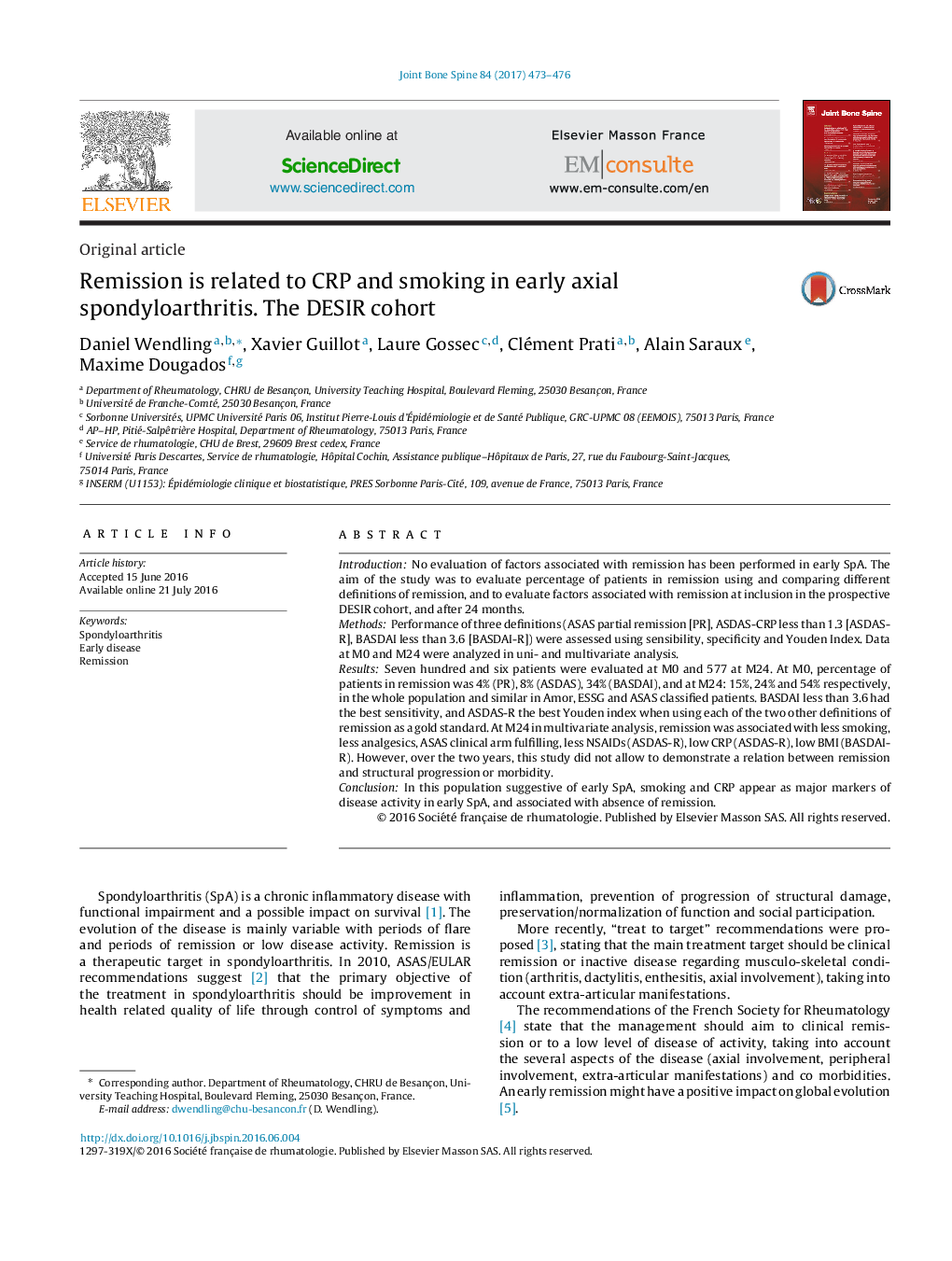| Article ID | Journal | Published Year | Pages | File Type |
|---|---|---|---|---|
| 5667721 | Joint Bone Spine | 2017 | 4 Pages |
IntroductionNo evaluation of factors associated with remission has been performed in early SpA. The aim of the study was to evaluate percentage of patients in remission using and comparing different definitions of remission, and to evaluate factors associated with remission at inclusion in the prospective DESIR cohort, and after 24 months.MethodsPerformance of three definitions (ASAS partial remission [PR], ASDAS-CRP less than 1.3 [ASDAS-R], BASDAI less than 3.6 [BASDAI-R]) were assessed using sensibility, specificity and Youden Index. Data at M0 and M24 were analyzed in uni- and multivariate analysis.ResultsSeven hundred and six patients were evaluated at M0 and 577 at M24. At M0, percentage of patients in remission was 4% (PR), 8% (ASDAS), 34% (BASDAI), and at M24: 15%, 24% and 54% respectively, in the whole population and similar in Amor, ESSG and ASAS classified patients. BASDAI less than 3.6 had the best sensitivity, and ASDAS-R the best Youden index when using each of the two other definitions of remission as a gold standard. At M24 in multivariate analysis, remission was associated with less smoking, less analgesics, ASAS clinical arm fulfilling, less NSAIDs (ASDAS-R), low CRP (ASDAS-R), low BMI (BASDAI-R). However, over the two years, this study did not allow to demonstrate a relation between remission and structural progression or morbidity.ConclusionIn this population suggestive of early SpA, smoking and CRP appear as major markers of disease activity in early SpA, and associated with absence of remission.
